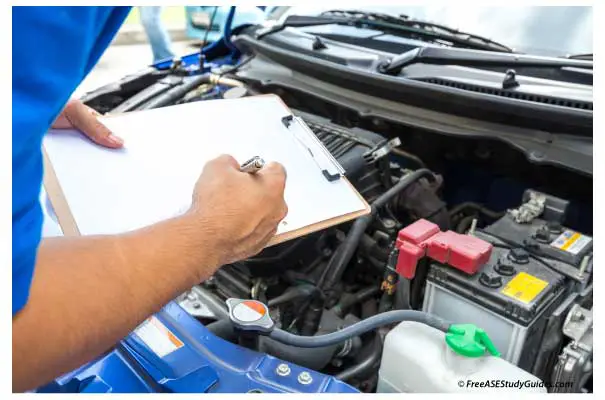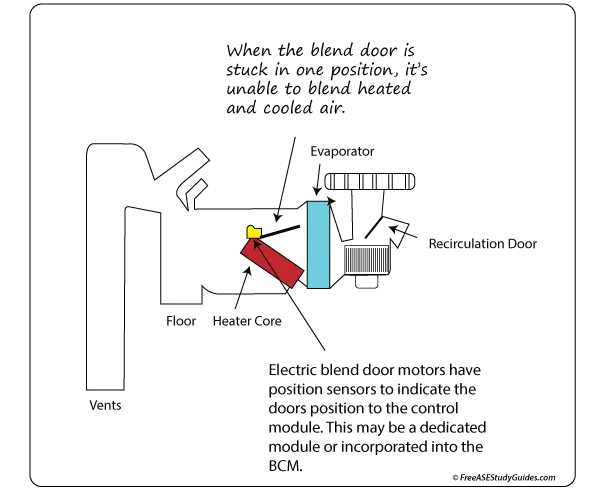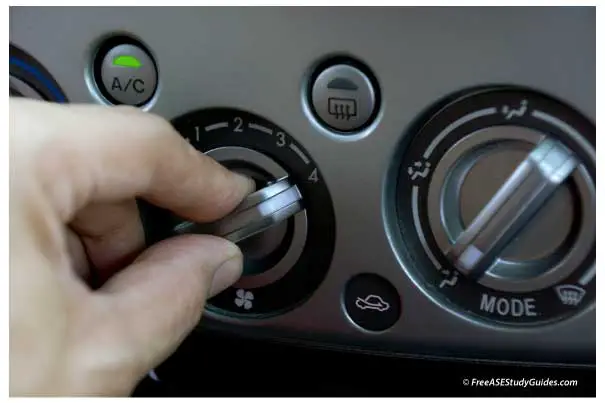Air Conditioning System Check

After reviewing the customer's complaints and concerns, perform the initial inspection of the air conditioning system. The first step is verifying the customer's complaint.

A wet spot on a hose or connection may be oil and refrigerant leaking from the system. Sniff the area with a refrigerant leak detector to verify a leak in the system.
If a CCOT (Cycling Clutch Orifice Tube) system's compressor's clutch is unheard during the test drive, ensure the clutch engages in the service bay. This process indicates that the compressor's electrical and control system is functioning. Also, notice fan speed operation. A weak or inoperative fan deprives the condenser of airflow, deeply affecting its ability to cool and condense the incoming refrigerant.

No matter how well the air conditioning system operates, the system will only perform well if the blend doors mix heated and cooled air. The blend door or temperature door blends the heated air from the heater core with chilled air from the evaporator core. The temperature of the outlet tube from the evaporator should be cool to the touch because this tube is on the low side of the system, after the system's metering device.

With a manual air control, the operator can block air from passing through the heater core with MAX AC. Or stop all air from passing through the evaporator with the full heat position. The operator can also achieve any variable setting. An automated temperature computer-controlled system blends the air to achieve the desired temperature entered into the control head by the vehicle's operator.